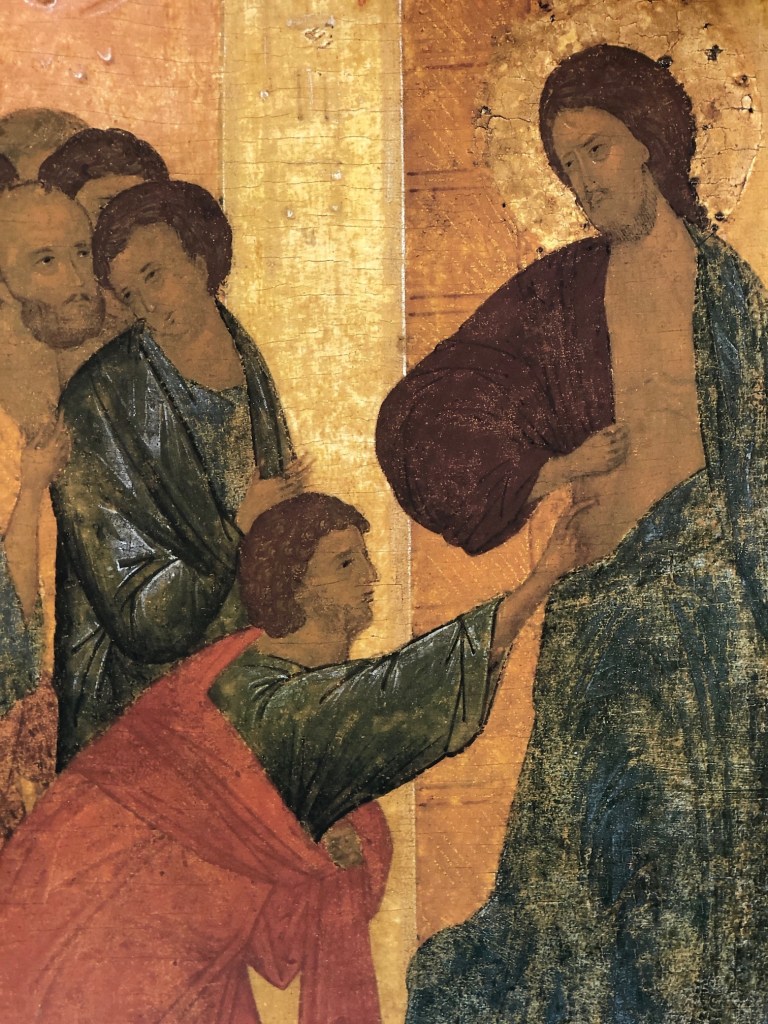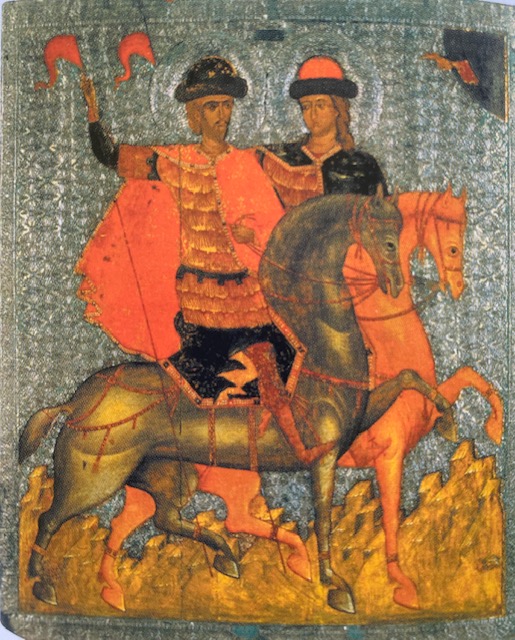
In thinking about the differences between religious art and icons- the subject of one of iconographer Betsy Porter’s online discussions, I came up with the following ideas that I hope will be helpful to iconographers and artists alike.
One of the key differences between religious art and icons is the very nature of the symbolic language of icons. In icons there is no attempt to portray “reality of the natural world. Rather, the icon is all about being a sign and a symbol which points to the reality of God’s presence.
The study of semiotics can be helpful in thinking about this topic. Semiotics is a specialized language dependent upon the use of symbols for communication and created for the purpose of achieving greater exactitude.
Semiotics is often used in reference to the symbolic language of computer programming, but it applies equally here as a way of formulating thought that describes the process of how human beings reach understanding through the use of abstract symbols.
Semiotics is a key tool to ensure that intended meanings (of for instance a piece of communication or a new product) are unambiguously understood by the person on the receiving end.
Semiotics, put simply, is the study of how an idea or object communicates meaning — and what meaning it communicates.
A sign is any motion, gesture, image, sound, pattern, or event that conveys meaning. The general science of signs is called semiotics. The instinctive capacity of living organisms to produce and understand signs is known as semiosis. And, of course, this very issue is at the heart of the difference between religious art and religious icons.
Acts 2:22 – “Ye men of Israel, hear these words; Jesus of Nazareth, a man approved of God among you by miracles and wonders and signs, which God did by him in the midst of you, as ye yourselves also know”.

Miracle Working Icons
Theologically, all icons are considered to be sacred, and are miraculous by their very nature because they are a symbol of the incarnation. They are a means of spiritual communion between the heavenly and earthly realms. However, it is not uncommon for specific icons to be characterised as “miracle-working”. God has chosen to glorify these icons by working miracles through them. Such icons are often given particular names (especially those of the Virgin Mary), and even taken from city to city where believers gather to venerate them and pray before them.
Icons represent concrete events of sacred history and indicate the inner meanings visually. Icons are meant to be a transfigured art form, not reflecting the problems of life but answering them
The flat space in the icons remove the illusion of three dimensional space and a depiction of the natural world that our eyes see. The connection between figures and objects becomes conventionally symbolical the image is reduced to a minimum of detail at a maximum of expressiveness.
The Icon is essentially inseparable from church art because the spiritual reality it represents cannot be transmitted otherwise than through symbols.In the icon of the Trinity that was painted by Andrei rublev in the 1400s the image represents the three men in white who are shown as angels in the icon who came to Abraham and Sarah to tell them that they would have a child despite their age, and to whom the couple showed hospitality under the tree of Mamre. This is the story from Genesis Chapter 18.
This icon came to be used as the key image of the Trinity in the Orthodox tradition partly because it was believed to be the first visible revelation of divinity to man but also because it provided an image through which to represent the godhead without representing God the father. The angels were not at this stage associated with specific persons of the Trinity. This imprecision is what enabled the image to remain mystically unknowable. Rublev passes over the inessential details of the subject reducing the image to its contemplative essence- the unity and Trinity of the godhead. This icon is imbued with the contemplative spirit of Hesychasm. This icon epitomizes Russian icon painting at its most pure and intense, silently revealing the triune God to the inner eye or heart of the faithful. The theologian philosopher Pavel Florensky said of this icon that it is in itself proof of the existence of God.
I hope this article is helpful food for thought, as we move forward to creating new icons for the twenty-first century. I think many discussions on the subject would be very helpful!
Some Resources used in this article: “The Meaning of Icons” by L. Ouspensky and “The Avant Garde Icon” by Andre Spira.
Please visit my website to learn about my icons and icon writing classes!
http://online.iconwritingclasses.com
May God bless the work of your hands,
Christine Simoneau Hales

